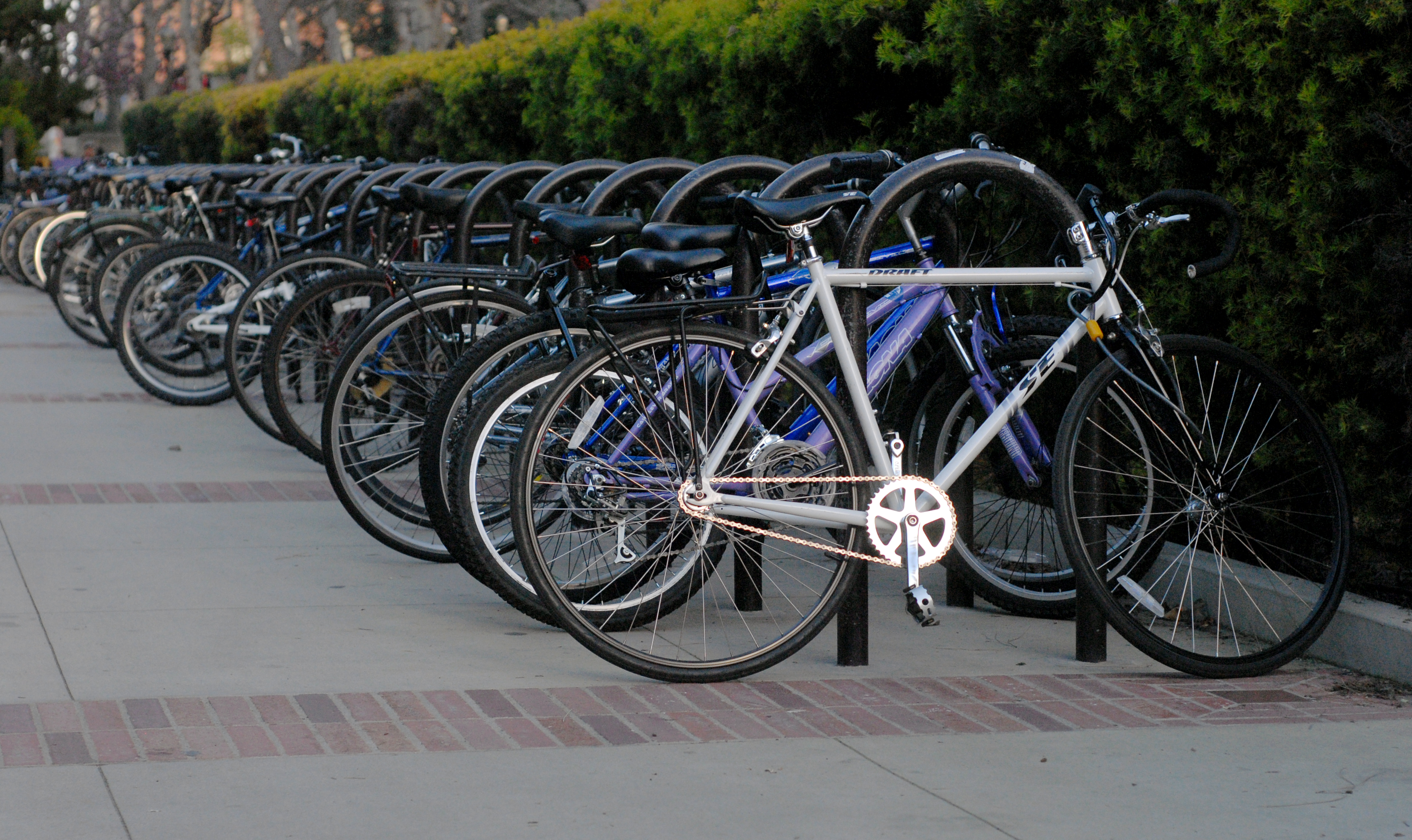City council approves plan to make L.A. more bike-friendly, add 200 miles of new lanes

The bike racks on Bruin Walk illustrate the popularity of this vehicle on campus. The L.A. City Council recently approved a new plan to make the city more bike-friendly.
The Los Angeles City Council unanimously approved a bicycle master plan on Tuesday that lays out a bike-friendly blueprint for the city.
The plan, which is the revision of a first draft proposed in 2009, establishes a long-term goal of 1,680 miles of interconnected bikeways and 200 miles of new bicycle routes, with sections to be completed every five years until 2045. This will include Wilshire and Santa Monica boulevards, and potentially streets in Westwood Village such as Gayley Avenue.
The plan also provides a path for the city to start implementation, said Tony Perez, spokesman for Los Angeles City Councilman Ed Reyes.
The city does not know how much the project will cost and is discussing where it might be able to secure additional money beyond what voter-approved funding has allotted. Street resurfacing could start this year, but specific projects won’t begin until they are fully funded.
“It opens up a whole new era for the city of Los Angeles. When you really think of the idea that the city of Los Angeles is committing itself to bicycles in the international city of cars, it raises some eyebrows,” Perez said. “(The plan) is significant to our transportation future and making bicycles a part of that future.”
The 2009 draft drew wrath from bicycling advocates, including Mihai Peteu, the manager of the Design | Media Arts department at UCLA.
One of the complaints was that the draft mainly focused on neighborhood communities instead of major streets, he said.
“Actual problems were sidestepped,” Peteu said.
For Peteu, the focus needed to be on heavily trafficked thoroughfares. He helped launch the L.A. Bike Working Group that gathered enough momentum to include people from the South Bay, Central Los Angeles and the San Fernando Valley.
Using a collection of colored place marks, participants marked in pencil the routes they took to different destinations, such as popular restaurants and places of employment.
After about eight months of work, a pattern of heavily penciled streets soon surfaced into a so-called “backbone network.”
“We really got the bicycle community involved in the creation of that plan, and that is significant because they are the ones really affected,” Perez said.
Other parts of the plan have specifically targeted low-income neighborhoods.
“Streets in low-income neighborhoods are generally narrower and older and hard to put in bike lanes,” said Allison Mannos, the urban coordinator of the Los Angeles County Bicycle Coalition.
The plan addresses the issue of aiding disenfranchised areas with bike lane infrastructure, said Mannos, a UCLA alumna.
“People of low-income neighborhoods do not have a lot of access to safer streets like others in more affluent areas,” Mannos said.
However, the plan will require further engagement in order to implement the bike lanes, Mannos said. Conflicts with parking lanes and bus routes are among the chief concerns.
Peteu said cycling advocates are hoping for a smooth implementation process.
“I really think that I will believe it when I see it,” said Herbie Huff, co-president of Your Bicycle Coalition at UCLA and an urban planning graduate student. “There are 1,600 miles in that plan, and I am extremely skeptical of 1,600 miles actually happening with the government and the politicians we have now.”
With reports from Ramsey Ugarte, Bruin contributor.


